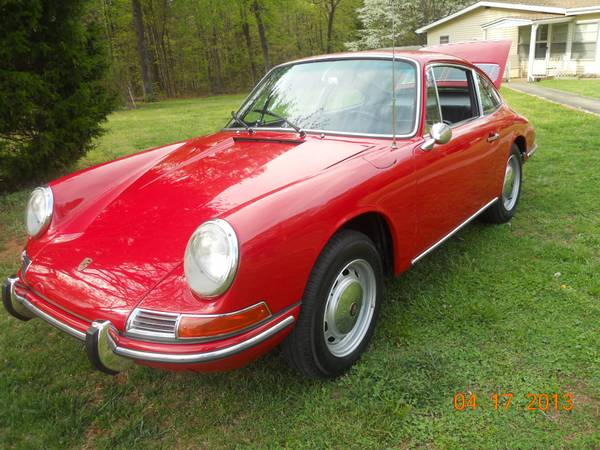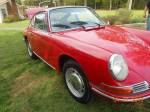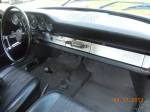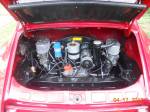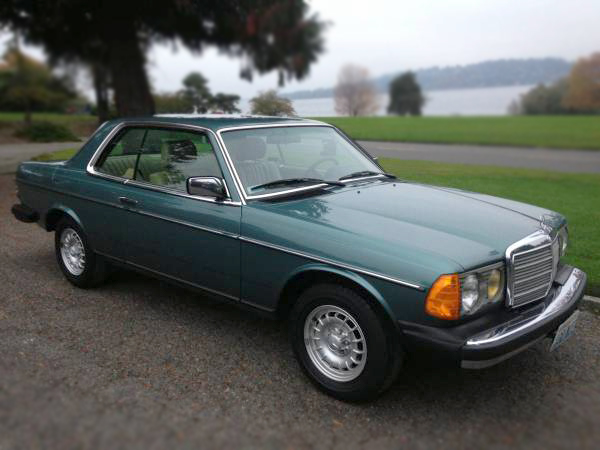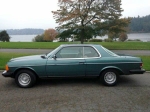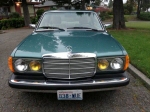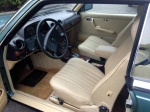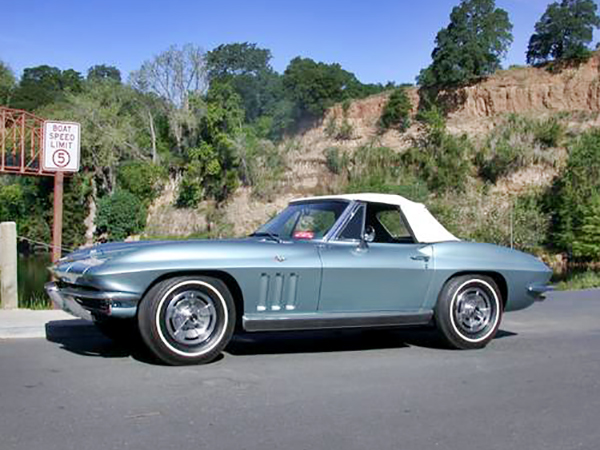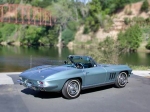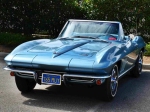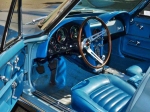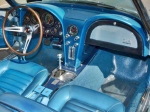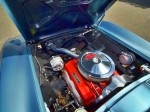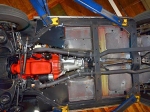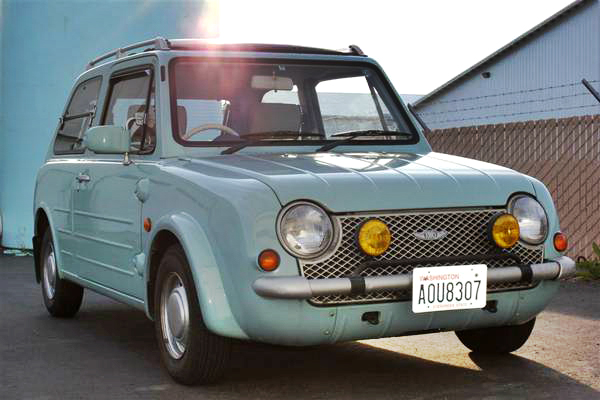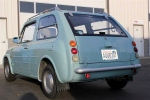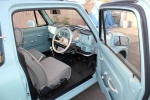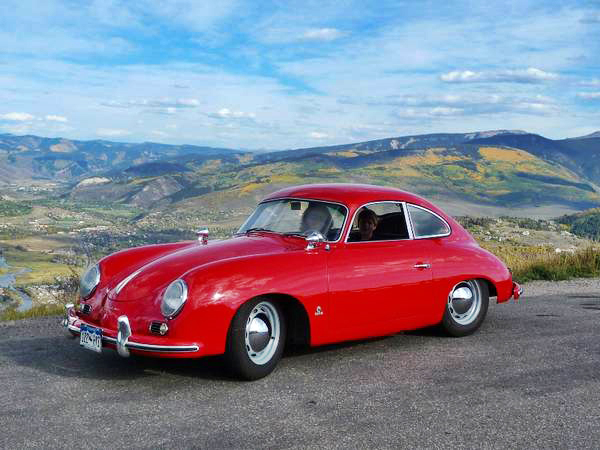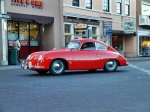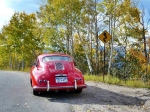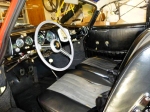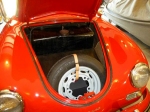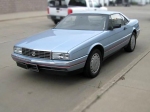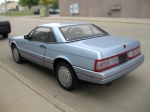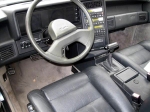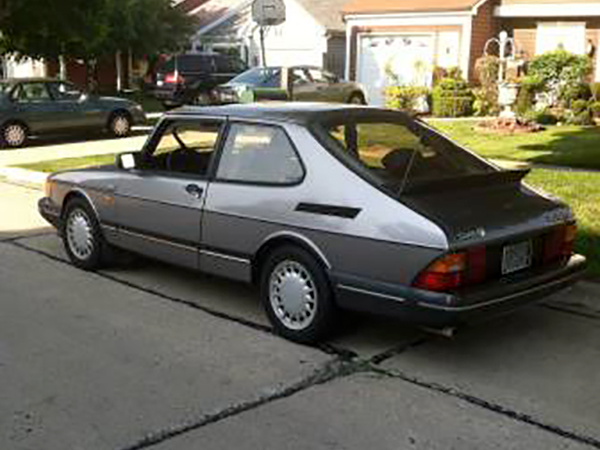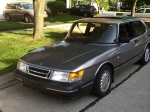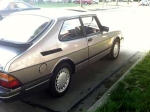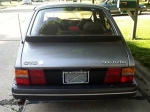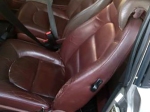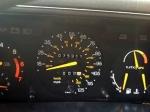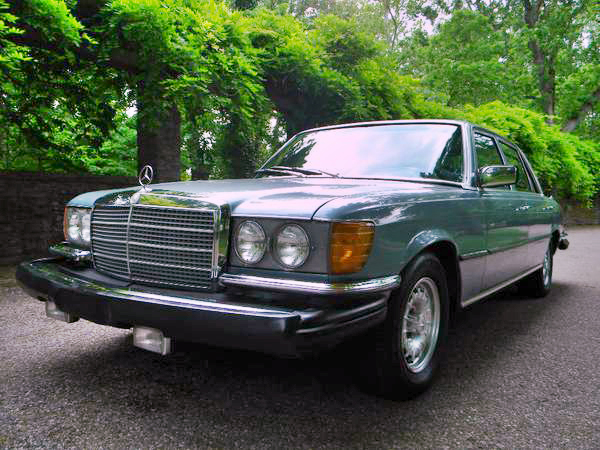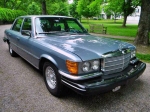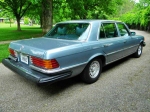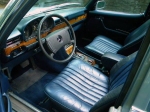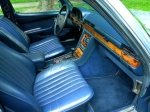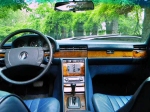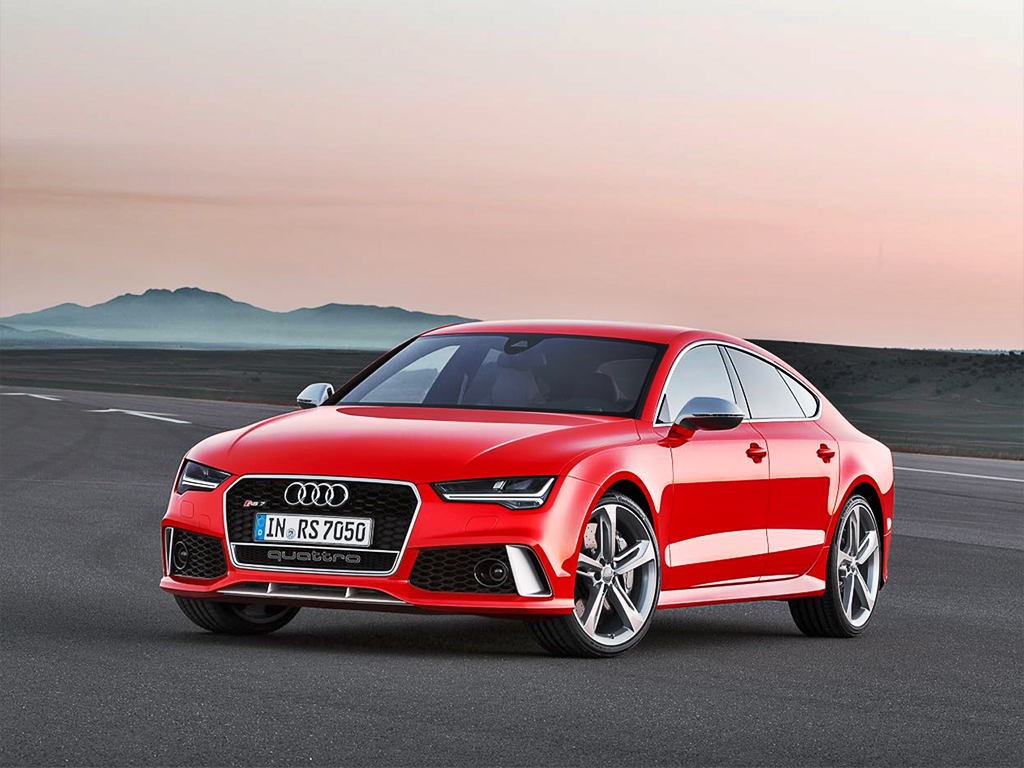As it did when it was introduced in 1965, the 912 offers much of the same joys of owning a classic Porsche at prices that are still attainable. With their iconic looks, nimble handling and go-the-distance fuel economy, the Porsche 912 is a Cinderella story in the making. The 912 presented here has had a ground-up restoration. Beginning with an original 55,000-mile car, everything but the clock rebuilt or replaced with NOS. It is said to be numbers matching with its original 2.0-litre motor professionally rebuilt, as was the transaxle. It wears what appears to be an excellent bare-metal repaint in its original Polo Red. Interior looks very tidy and has its original radio with new (expensive) door cards, headliner, carpeting and more. As short-wheelbase 911 prices soar out of reach, a 912 for under $40,000 is especially attractive. Find it here on Craigslist in Iron Station NC for a bargain $38,000.
Page 196 of 221
Imagine walking into a Mercedes-Benz showroom in 1985. There sits before you a handsome coupé with a turbo-diesel motor in the popular-at-the-time 877 Blue-Green Metallic over Beige Tex. By now, the stalwart 3-litre five cylinder diesel motor has already gained legendary status, but placed in this two-door pillarless variant of the W123 chassis, it takes on a completely new purpose. This, in its turbo-charged form, combined with the sporty aesthetic, is the world’s first diesel-powered performance touring 2+2. This is the same basic motor that in 1978 broke nine different diesel and gas speed records, averaging nearly 15 MPG at over 195 MPH through 12 hours. Furthermore, the 300 CD was so impeccably engineered, that in its styling, it lost nothing in structural integrity, its Mercedes-Benzness. Naturally, you’re sold. Jump ahead to 2014 and after 29 years as the sole owner, it’s time to sell. Despite limited production, a 300 CD coming on the market is nothing extraordinary. As the designers and engineers intended, most are still on the road and somehow managed to skip over the period where they looked tired, such that they seamlessly went from modern to classic. A 300 CD, like any of the Mercedes-Benz diesels, can clock literally millions of miles, thus it’s certainly not extraordinary to find nice examples with 250,000 miles or more. What is extraordinary is that the very same Blue-Green over Beige 300CD that lured its owner on that showroom in 1985 looks exactly the same as it did then. With only 34,000 miles, it’s not hard to imagine why. Original paint appears flawless as does the interior. Even the floor mats look like they’ve had nary a soled shoe placed upon them. Everything including the original Becker radio and all power accessories, such as windows and sunroof, are said to be working perfectly.The owner states that it has been meticulously maintained and there’s surely no reason to doubt that. The attention to detail in its preservation is evident in every sense, including all its original documents, such as the 1985 brochure, from the original sale. Perfection has its price with this one priced double of what a 100,000-mile example would go for and several thousand over Hagerty’s high value. This however, is clearly one of those that is hors categorie. Its condition and mileage might be better compared to a late-model E or CLK Class coupé, except that this, in 1985, was the last two-door diesel-powered Mercedes-Benz we would see on these shores. Hors categorie indeed. Find it here on Craigslist in Seattle WA for $22,500.
At any given collector car auction, a mid-year Corvette (1963-1967) is a perennial favorite, gaining acceptability even amongst the most elite of international collectors. Playing on Detroit’s strength of cubic inches and horsepower, the well-optioned big-block 427s with excellent provenance tend to garner the most attention, deservedly so. Perhaps less in their shadow as in their aura, other Corvettes have less of an opportunity to shine, but are gems nonetheless. This is an outstanding example of that. This one comes from 1966 and has the smallest and least powerful motor offered that year. In saying that, we’re still talking 300 horsepower in a car weighing 200 pounds less than its 427 counterpart. That aside, this is a one-owner Corvette with an impeccable detailed and documented history which includes its original sales receipt, every service receipt including oil changes, and all registrations, in addition to all original books. The car underwent a frame-on restoration in 2010 and appears to have been done to a very high standard as evidenced by its NCRS Top-Flite award the following year. The 1966-only Trophy Blue over the 414 blue interior and white top (Trophy Blue hardtop included) is an alluring and sought-after combination. The car is also decently optioned with original AM/FM radio, power steering, and teak steering wheel. It is, on paper, a worthy investment. Its story, provided by the original owner, through photos and tales, is priceless. Find it here on Craigslist in Rancho Cordova CA for $78,000.
Well before the automotive movement that saw retro-inpsired designs such as the Volkswagen New Beetle, Mini Cooper and Ford Thunderbird, Nissan went through their retro phase. Sold exclusively through what Nissan called their Cherry Stores, the series included the quirky Be-1, the even quirkier S-Cargo, and the two more classic designs, the Figaro and the lesser known Pao. With queues from the Austin Mini and A40 of the 1960s, it was a “city car”—not quite micro, but sub sub-compact, weighing around 750 kg. Powered by a 100cc inline four, they were nimble and downright peppy, àpropos to its free-spirited styling. While we occasionally see Figaros and even S-Cargos, it’s unusual to find a federalized Pao for sale on these shores. Finding one with a canvas-top and 5-speed (most, and all Figaros, are 3-speed autos) is rare anywhere in the world. Today, we have that very car, preserved as only a Northwest car can be. With what appears to be excellent original paint and interior, this little car looks to have been esteemed throughout its 96,000-mile ownership; small but mighty in its distinction. Find it here on Craigslist in Seattle WA for a reasonable $10,000.
In the collector car world, there a few cars as consistently infallible as a Porsche 356, both in terms of their mechanical dependability and their investment reliability. Perhaps the purest among these, the ones that originated in Ferry Porsche’s head, are the pre-A models that were built between its rollout in 1951 and 1956, when the more “modern” 356A was introduced. With all air-cooled Porsches experiencing stratospheric appreciation, the few good examples left will soon be out of reach for all but the Seinfelds and other blue-chip collectors. Today’s example comes from 1954 and while it’s strayed from the original in just about every aspect—color, interior, wheels and motor—it wouldn’t be prohibitive to return the car to its as-born state. With original paint and interior there to match and the location of its original motor known, it would be a relatively easy finish to what is a very good foundation. Otherwise, the car could be kept as is for what appears to be an excellent driver. There are some minor rust issues, but nothing that needs immediate attention. The same goes for the interior blemishes. That it has its original Telefunken radio is a big bonus, regardless of whether it works or not. With not much investment, this could easily be a six-figure car. At the same time, its $85,000 asking price may be a bit strong for its current state, but that could literally change tomorrow at the rate these are climbing. Find it here on The Samba in Edwards CO.
For the moment, the jury’s still out on whether the Allanté could be called a collectible, but they do have a following. They certainly have an interesting story. Perhaps how they were produced is as interesting as the final product. Bodies were designed and built by Pininfarina, then shipped back to Cadillac for final assembly, 56 at a time, using specially modified 747s. Naturally, this made for some significant overhead and made the Allanté the highest priced American production car of its day. With its original price at around $60,000, the open sports-luxury segment didn’t see enough incentive to be lured away from established company like the Mercedes-Benz SL or Jaguar XJS, despite these too being somewhat higher priced. Where the Merc was about simple elegance and the Jag was classically refined, the Allanté was about technology and edginess. There was some appeal to that, but moreso it was something that domestic—and specifically Cadillac—loyalists could opt for. That sentiment seems to carry over to today. Despite relatively low production numbers and Pininfarina roots, the Mercedes SL is still king of the lot, leaving the Allanté as an alternative to those who don’t stray far from Hamtramck. Even amongst them there is some debate as to which Allanté was best. Most gravitate toward the 1993 with its 295-hp 32-valve Northstar V8. Others say the earlier cars for their lower production numbers and easier maintenance. What we have here today is one of the latter that is in exceptionally nice condition, benefiting form a single owner. Its rare Light Blue Metallic paint looks to have held up very nicely, as does the original interior. Though its 4.5 litre motor puts out 95 hp less than the Northstar, it is a dependable workhorse, with some going 300,000 miles or more. That’s quite a distant worry here as there are only 56,000 miles on the clock. The Cadillac Allanté isn’t for everybody and, with less than 21,500 built (over 20% of those in ‘93), that’s probably a good thing. Potentially a great thing. Find it here on Craigslist in Des Moines IA for a bargain $8,500.
June 05, 2014 – Jackson Center, Ohio
Airstream, maker of the iconic silver-bullet travel trailers, has unveiled its all-new luxury passenger van – the Airstream Autobahn® – a vehicle that delivers a new standard in VIP travel. Through its ongoing collaboration with Mercedes-Benz, Airstream combines its signature quality and design with individualized comfort, convenience and productivity in this new category-creating platform.
First introduced at the Mercedes-Benz Sprinter national dealer meeting this week, the Autobahn stays true to Airstream’s heritage of aircraft inspired design and innovation. Taking cues from the private jet experience, the Autobahn offers a sleek, sophisticated interior, expansive space and handcrafted furnishings. With seating for eight, the Autobahn includes the advanced Airstream Smart Control System™ for a flawless passenger experience.
“Airstream continues to set the industry standard for unparalleled luxury travel, a strategy further enhanced by our partnership with Mercedes-Benz,” said Airstream CEO and President Bob Wheeler. “Whether your VIP is a professional client or family member, we are creating a new category that delivers an exclusive level of focus on individual passenger comfort and convenience.”
With its carefully designed professional and personal functionality, the Autobahn also takes aim at the commercial market, targeting companies that cater to affluent travelers.
Design & Luxury
The Autobahn is equipped with a power entry sliding door that open onto a well-appointed cabin with a stunning array of finishes, materials and amenities including durable wood trim, leather seating, dual refrigerators and individualized controls to enhance the passenger experience.
Each position in the main cabin includes a power footrest, heated seating and power outlets (120v and USB) along with a workspace equipped with a functional desk.
Productivity & Convenience
Autobahn comes standard with the innovative Airstream Smart Control™ System providing centralized control for all main cabin lighting, shades, heating and air conditioning through the user’s smart device. The system also controls onboard entertainment, with state-of-the-art electronics including a 32 inch LCD TV screen, Blu-Ray player, Pandora, and an Apple TV box with Air Play functionality. The Airstream Smart Control System can be operated through the vehicle’s onboard electronics, any web-enabled smart device (including smart phones & tablets) and laptops with wireless capabilities.
Safety
Superior safety features include collision prevention assist, lane keeping assist, blind spot assist, front and rear parking assist, headlight high beam assist and more.
Beyond the reassuring coverage of the three year/36,000-mile warranty, the Autobahn is supported by the premier coast-to-coast Mercedes-Benz dealer network and the Mercedes-Benz Club of America.
Airstream first began its collaboration with Mercedes-Benz with the launch of the Airstream Interstate in 2004. The Interstate remains the top selling Type B motorhome model for the third year in a row.
The Airstream Autobahn is now available and will be sold exclusively through Mercedes-Benz Sprinter dealers across the nation. For more information visit www.airstreamautobahn.com or contact your local Mercedes-Benz Sprinter dealer.
Long live Saab, particularly the pre-GM swoosh-back 900s and earlier. Saabs have always enjoyed a loyalist following and the appreciation for what some consider the real Saabs continues to grow and values are beginning to reflect that. Motors, while finicky, are built to last a quarter million miles and often more before even considering a rebuild. Therefore it’s not unusual to find a quality Saab 900 with 150,000 miles or more fetching $5,000 or more. This 900 Turbo has just over half those miles at just over half that asking price. Despite poor photos, the car looks to be in excellent condition and is said to have been garaged. Its Edwardian Gray paint appears to be free of rust or oxidation. The handsome Burgundy Red interior looks like it shows some typical wear on the drivers seat bolster, but there are no splits in the seams, which is unusual. Headliner isn’t visible in photos. Without question worth further investigation for anyone who appreciates a solidly built, fun-to-drive, practical, durable, and quirky bit of sub-culture. Find it here on Craigslist in Mundelien IL for a possibly too-good-to-be-true $2,600.
As a successor to the 300SEL 6.3 of the early ‘70s—credited with being the first German performance sedan, or Q-Ship—Mercedes-Benz engineers borrowed a page from Detroit and employed bigger-is-better. A handbuilt 6834 cc lump was stuffed into the W116 450SEL, but they didn’t stop there. Daimler-Benz saw an opportunity to enter the space where Rolls and Bentley played but needed more than a big motor. Under a license from Citroën, they gave the 6.9 a hydropneumatic suspension, allowing the car to literally float over the road as well as temporarily raise and lower the car. This was the company’s first go at the suspension and most of that system carried over into later generations including the cars of today. In the 6.9 we also saw the first use of a power reclining rear seat as well as elegant touches like burled walnut trim and one of the world’s first climate control systems. It was an indication that this was aimed at a buyer who sought a higher degree of luxury, but with all the engineering, build quality, and German-ness that they’ve come to know as Mercedes-Benz. It was a car that could easily be chauffeured, but also one that could be enjoyed on the autobahn as well as B roads. In spite of its importance in automotive history, the market is yet undecided on its collectibility. It’s certainly a car that a marque collector wants in the garage, but beyond that it’s on par with any other classic Mercedes-Benz saloon and values have remained stable, but relatively flat. The one exception is, oddly, in the driver-quality 6.9s. It seems that while the rest of the market decides on its status, a group of buyers has formed a genuine appreciation for their traits as an excellent road car. Prices for solid, rust-free, well-sorted drivers have nearly doubled since this time last year. Finding any 6.9 that doesn’t require an extensive list of costly repairs for under $10,000 is getting increasingly difficult. Nevertheless that is precisely what we have here. Although it has seen some miles (165,000 assuming no faults with odometer), everything else about the car appears to be in excellent order. An ‘80s bare-metal repaint in its lovely and original Silberblau has held up very well thanks to a long-time California climate. A few minor rust spots are disclosed, but shouldn’t pose a threat if returned to a salt-free environment. Interior has excellent patina with very little wear beyond a small tear in the armrest (common) and rather tired looking rear seat cushion. All power accessories are said to be in working order including windows and sunroof (a rarity in itself) and even its original Becker radio works. But perhaps the most attractive thing about this 6.9 is its service history, with complete documents cataloged back to 1980 under the stewardship of one owner who held the car for 30 years. Service is up to date, including a recent major as well as replacement of the accumulators in the hydropneumatic suspension system (this is where they fail if they’re going to fail). One can’t help but wonder if the buyers of the driver-quality 6.9s aren’t onto something. It just looks inviting to drive. Or perhaps be driven. Find it here on Craigslist in Mariemont OH for an attractive $8,950.
The RS 7 Sportback – the most potent five-door coupé in the Audi range – now looks even sharper and performs even more efficiently, yet no less formidably. The new generation RS 7 Sportback becomes available to order in Europe later this summer ahead of first deliveries in late 2014, with a US-spec 2016 model debuting sometime next year. It combines subtle styling enhancements with new LED lighting, upgraded infotainment features and revisions to the 560 PS V8 TFSI powerplant which enable it to comply with new EU6 emissions regulations.
“The Audi RS 7 Sportback confirms the reputation of the RS models as the superior, top athletes of our brand,” states Prof. Dr. Ulrich Hackenberg, Member of the Board of Management for Technical Development of AUDI AG. “The combination of a powerful four‑litre V8 engine with Cylinder on Demand technology, quattro drive and intelligent lightweight design makes the RS 7 Sportback an outstanding piece of sports equipment for any fan of dynamic and yet efficient driving.”
Even at first glance, the Audi RS 7 Sportback reveals its dynamic character – the long bonnet, flowing C-pillars and the sharply sloping rear end form an aesthetic overall impression. New design details add striking touches. They include the Singleframe grille with the black honeycomb typical of RS models, with the corners now even sharper and more distinctive. Three optional packages – matt aluminium, gloss black and carbon – make the look of the RS 7 Sportback even more distinctive.
Subtle modifications have also been made to the bumper, with its distinctive air inlets. The headlights, also adapted to the new singleframe grille, now feature LED technology as standard. Matrix LED technology is available for the first time on the RS 7 Sportback, with integrated dynamic turn signals on the front and rear. The tail lights also have a new interior design. New to the paint palette are the colours Floret silver, metallic; Glacier white, metallic; Mythos black, metallic and Sepang blue, pearl effect.
In the elegant black interior, dominated by the RS sport seats, the designers have made judicious changes to the instrument cluster, including the air outlet controls of the vent nozzles, the shift paddles behind the steering wheel and the quattro emblem on the instrument panel. The standard MMI navigation plus with MMI touch now uses the modular infotainment platform of the latest generation; its highlight is an efficient graphics processor from Audi partner, Nvidia.
The EU6-compliant 4.0 TFSI engine in the revised Audi RS 7 Sportback provides the same prodigious 560 PS, with a constant 700 Nm (516.3 lb-ft) of torque at engine speeds between 1,750 and 5,500 rpm. The engine catapults the five-door coupé from 0 to 62mph in 3.9 seconds; the optional dynamics packages allow top speeds of 174mph and 189mph respectively. On a combined cycle however, the resonant V8 twin-turbo returns up to 29.7mpg, and emits 221 grams of CO2 per km. A key factor in this efficiency is the Cylinder on Demand (CoD) system, which can shut down four cylinders during partial load operation.
An eight-speed tiptronic transmission tuned for optimum performance also features a tall final gear to contribute to fuel efficiency. The might of the V8 engine is harnessed by the quattro permanent all-wheel drive system and used to best effect by the standard Sports differential, which apportions torque in precisely measured quantities between the rear wheels according to driving conditions.
RS adaptive air suspension is fitted as standard, together with adaptive damping, and is controlled via the Audi drive select driving dynamics system. Audi offers the tauter RS sport suspension plus with Dynamic Ride Control (DRC) as an alternative. A further option is dynamic steering, which continuously varies the steering ratio for greater agility.
The revised Audi RS 7 Sportback is fitted with 20-inch forged lightweight alloy wheels as a standard. Optional 21-inch cast aluminium wheels are available in three different colours. The four internally ventilated brake discs have a weight-saving wave design. Alternatively carbon fibre-ceramic discs are available as an option. Electronic Stabilisation Control (ESC) features a Sport mode that can be deactivated altogether if required.
